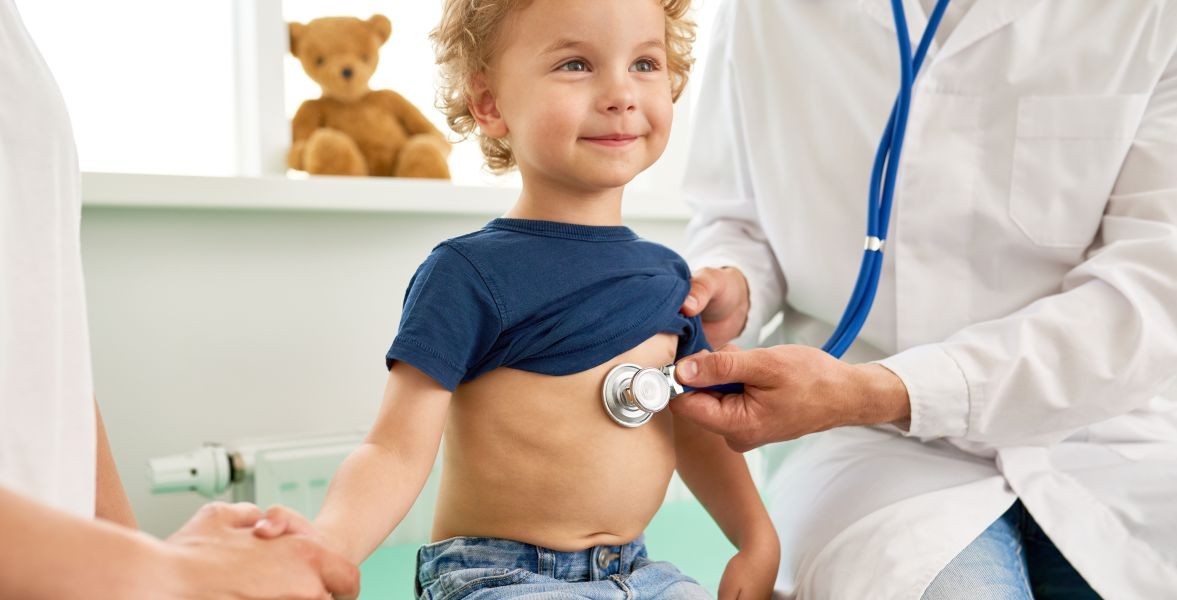Published - Thu, 04 Aug 2022

HOW TO EVALUATE ILL PEDIATRIC PATIENT
1. A primary survey should be performed immediately.
a) Airway: The patency of the airway needs to be evaluated.
— To remove tongue obstruction, the airway should be freed with external techniques.
— Obstruction from foreign bodies should be recognized and relieved.
— Gas exchange should be assessed and optimized.
— Aspiration of gastric or oral contents should be prevented.
— An artificial airway should be provided if no protective reflexes exist.
b) Breathing: The adequacy of ventilation should be assessed, including the equality of chest rise and breath sounds.
— A determination of whether air entry is impaired from a central or pulmonary cause should be made.
— Ventilation should be enhanced if necessary with mouth-to-mouth breathing, bag-mask ventilation, or endotracheal intubation with or without bag assistance.
— A surgical airway should be provided if an oral or endotracheal airway cannot be established.
c) Circulation should be assessed, including the quality and intensity of pulses in the upper and lower extremity and blood pressure.
— Hemorrhages should be controlled with direct pressure until surgical intervention can be accomplished.
— Intravenous vascular access and a resuscitative fluid bolus should be provided; if intravenous access cannot be rapidly achieved, intraosseous access should be performed.
— External cardiac massage should be provided if no pulse exists.
— Pharmacologic management of circulation should be provided if the fluid status is adequate and cardiac output is impaired because of either vascular or pump instability.
— Conversion of dangerous cardiac rhythm disturbances should be provided if hypotension and unresponsiveness ensue.
d) Neurologic examination: A preliminary assessment should be made according to the following simple scale:
— Alert and responsive to verbal stimuli
— Responsive to verbal stimuli but no spontaneous alertness.
— Responsive only to painful stimuli.
— Unresponsive to any stimuli
e) Overall examination:
— Infants should be unclothed and examined rapidly for injuries.
— Passive heat loss should be prevented by removing wet clothing and by providing external warmth.
— The patient’s core temperature should be obtained to monitor for hypo- or hyperthermia.
2. A secondary survey, entailing a detailed physical examination and history, is then performed.
a) Head
— Evidence of trauma is determined by palpating bony prominences and the maxillae and by inspecting the nose and ears for drainage of cerebrospinal fluid (CSF).
— The existence of dehydration is determined by inspecting the mucosae for evidence of decreased tearing or moisture or sunken eyes.
— The eyes should be inspected for pupillary size and extraocular movements. A funduscopic examination should be performed if possible to assess for the central nervous system (CNS) or toxic involvement.
— The oral cavity should be inspected for odor or discoloration that may imply a toxicologic basis for the condition.
b) Neck
— The neck should be palpated for midline tenderness or deformity.
— Flexion, extension, and rotation should be performed only after an injury have been excluded either clinically or by radiographic means.
c) Chest
— The chest wall should be inspected for symmetric expansion or disarticulation.
— Palpation for change in respiratory fremitus or inequality should be performed.
— Auscultation of the chest for breath sounds and evidence of adventitial sounds such as rales, rhonchi, or wheezes should be performed.
— Penetrating or blunt chest trauma is treated immediately.
d) Abdomen
— The abdominal wall should be inspected for bruising, penetration, or hematoma.
— Palpation for trauma, masses, or guarding and rigidity, which may indicate peritonitis, should be performed.
— Palpation of the flanks to search for hematoma or an expanding mass should be performed.
e) Pelvis
— The pelvis should be palpated laterally and in an anteroposterior position for tenderness or instability.
— The perineum should be inspected for lacerations, active bleeding, or hematoma. The urethra and rectum should be inspected for trauma or blood.
— In age-appropriate females, a pelvic and rectal examination should be performed, and pregnancy should be excluded.
f) Extremities
— The extremities should be inspected for signs of abrasion, hematoma, laceration, or deformity.
— Palpation of the bones for instability, tenderness, or deformity should be performed.
g) Neurologic assessment
— Attention should be focused on cranial nerve function, motor function, and sensory function, along with the patient’s level of consciousness.
— The presence or absence of reflexes should be noted.
— Serial examinations for changes in the level of consciousness or loss of neurologic function should be performed.
3. Additional studies are often nonspecific but may provide clues to the diagnosis.
a) Laboratory studies
— Aerobic and anaerobic cultures of blood
— Arterial blood gas (ABG) determination
— Complete blood count (CBC) and differential
— Electrolytes and bicarbonate
— Blood urea nitrogen and creatinine
— Immediate fingerstick glucose and serum glucose
— Urinalysis and urine culture
— Stool culture
b) Radiologic studies
— Abdominal radiography
— Abdominal ultrasonography
— Chest radiography
— Computed tomography (CT) of the head/abdomen
c) Ancillary studies
— Echocardiography
— Electrocardiography
— Lumbar puncture
— Urine for toxicologic analysis
Created by
Comments (0)
Search
Popular categories
Latest blogs

All you need to know about Syphilis
Tue, 15 Nov 2022

What is Pemphigus Vulgaris?
Tue, 15 Nov 2022

Know about Scorpion Stings
Sat, 12 Nov 2022

Write a public review